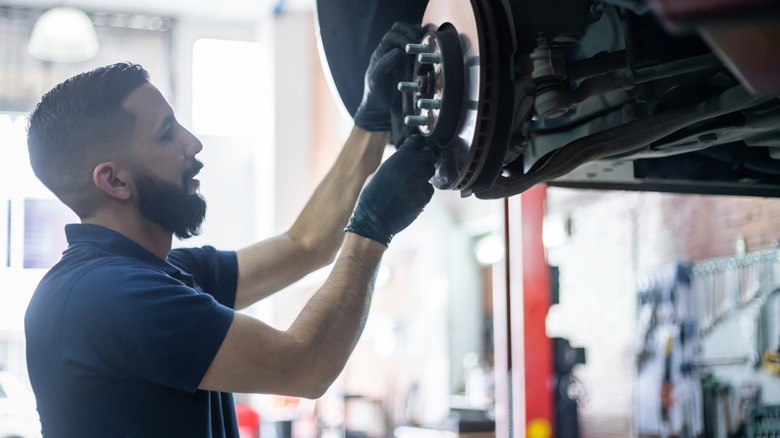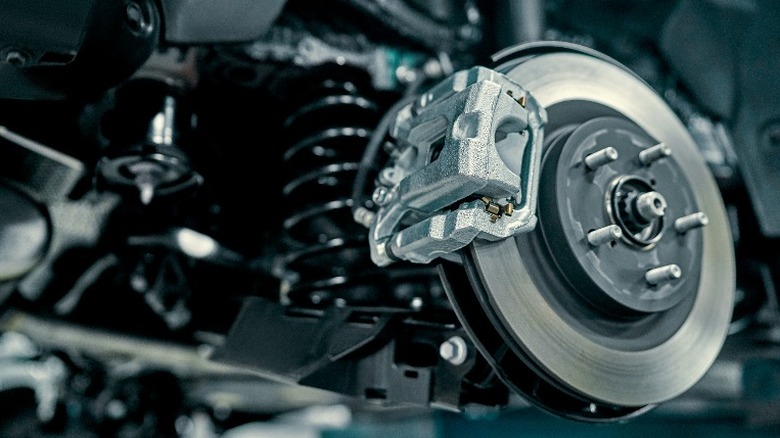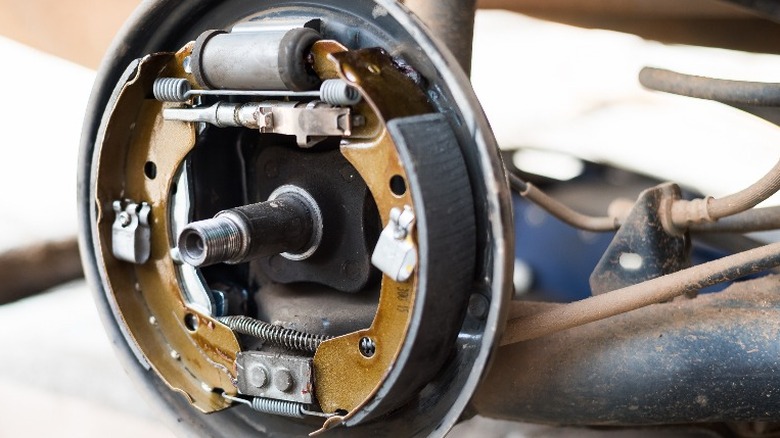
Hispanolistic/Getty
Your car’s brake system is one of its most critical components. It should come as no surprise that the brake system is responsible for stopping your vehicle and keeping it stationary as long as your foot is on the brake pedal. Despite being such a vital part of a car’s anatomy, many drivers don’t know how brake systems work or the difference between the two most common types: disc and drum. Both types of brakes rely on hydraulic power and friction to stop your car, but they do so using distinct technology and have different levels of mechanical resistance.
While drum brakes are common on older vehicles, many modern cars contain both disc and drum brakes. You’ll commonly see disc brakes on the front end of a car and drum brakes on the rear axle. But why use two different types of brakes at all, and what exactly are the differences between the two? Let’s dive in and find out.
What are disc brakes?

ORION PRODUCTION/Shutterstock
Disc brakes take their name from the large rotor found in disc brake systems. This brake rotor, along with special brake pads and calipers, is used to create the friction that stops your car. When you press the brake pedal, your vehicle’s hydraulic brake fluid becomes pressurized. That pressurized fluid then travels throughout a network of hoses and fluid lines to reach the car’s brake calipers. The calipers are built using pistons and house brake pads made of ceramic or metal. When the pressurized fluid reaches the caliper, it causes the pistons to expand and pushes the brake pads into the rotor, generating the friction used to stop your car. That friction adds up to steadily degrading performance — replacing worn-out brake pads and picking the right kind of hydraulic fluid are both vital to the long-term wellbeing of your car.
Disc brake systems are more complex and provide more braking power than drum brakes. They began to see widespread use in the 1970s as automakers endeavored to increase stopping power and vehicle safety. Today, many vehicles either use disc brakes on all four wheels or put discs at the front and drum brakes at the rear. Most of a car’s braking power comes from the front end, allowing front disc brakes to handle the bulk of the braking duties while the rear drums pull backup duty. Rear brakes also function as the emergency and parking brake.
What are drum brakes?

opportunity_2015/Shutterstock
Drum brakes are named for the large metal case or drum that surrounds the hardware found in these systems. The brake drum mounts to the wheel hub and encloses two brake shoes, a wheel cylinder, a series of springs, and other small parts. Like disc brakes, drum brakes rely on hydraulic fluid and friction. Depressing the brake pedal pressurizes the car’s hydraulic fluid. The liquid then travels through the brake lines to reach the drum brake system. The pressurized fluid causes the wheel cylinder to expand, pushing the brake shoes outward against the drum. The resulting friction is responsible for slowing your car.
Drum brakes are less powerful than disc brakes and are more commonly found on older vehicles. However, many modern cars still contain drum brakes on their rear axles. On these cars, the drum brakes function like secondary brakes, with the bulk of the braking happening in the front end. Additionally, drum brakes are seeing a resurgence in the electric vehicle industry because electric motors feature self-braking technology, resulting in a need for less powerful mechanical brakes.